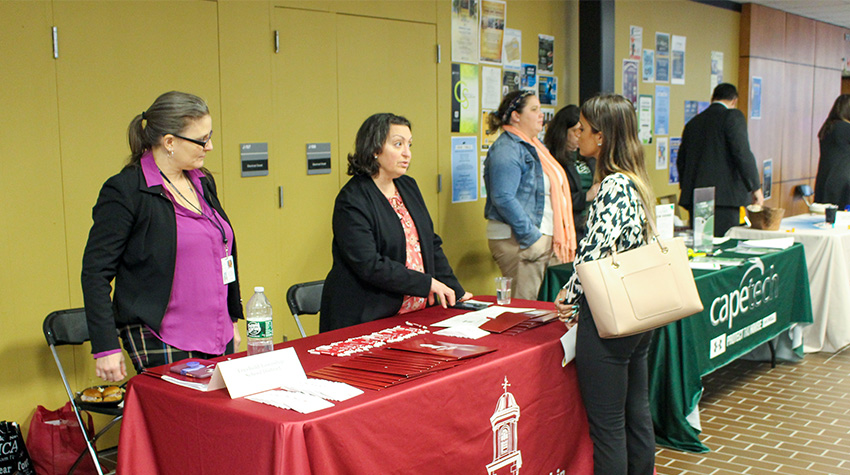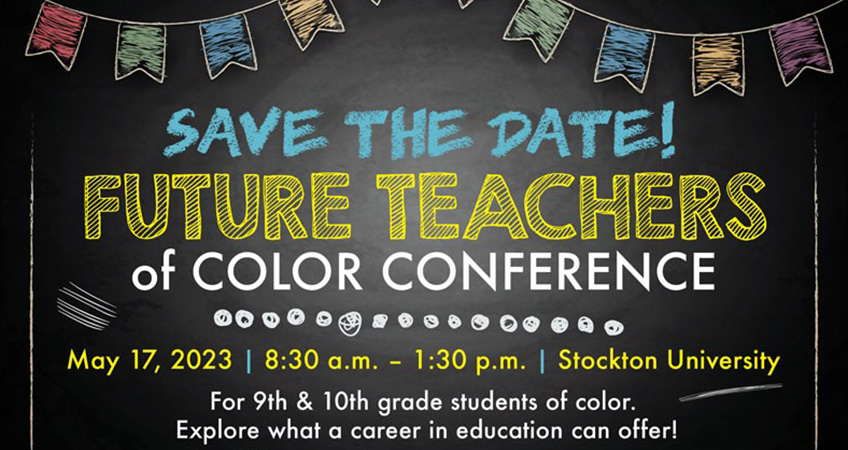How Can We Help All Students to Benefit from Diversity?
By Claudine Keenan
After observing the state of education both in and out of New Jersey, Claudine Keenan, dean of the School of Education, wanted to share her insights on how beneficial teacher diversity is for all students.
A strong consensus among social science researchers supports the multiple ways that all students benefit from diversity. National measurements and projections of public school enrollments suggest that our nation’s future students will continue to benefit from more diverse classmates through 2030.
However, these increasingly diverse high school graduates are pursuing education careers at uneven rates that are not equivalent to other careers that require a bachelor’s degree.
For example, while the percentage of teachers who identify as Hispanic, Asian, and Two or More Races has increased over the most recent decade or so, the percentage of teachers who identify as Pacific Islander and American Indian/Alaska Native has remained unchanged, and both the percentage of teachers who identify as White or as Black have decreased. As a result, the imbalance between our increasingly diverse P-12 student body and their educators continues to grow.

Here in New Jersey, our gap between diverse students and their teachers is similar to the national data, as outlined in a recent NJ.com article, “N.J. is becoming more diverse. So, why aren’t there more teachers of color?” In addition to this table that shows the gap, there is a searchable database to display teacher diversity for all districts in New Jersey.
Stockton University's Local Initiatives for Teacher Diversity
The School of Education at Stockton University has been working on multiple levels to help increase the diversity among future educators.
At the local level, Norma Boakes, the Teacher Education (TEDU) program chair, has been leading a working group of faculty, staff and an alumna to examine data that help outline some of the structural barriers to the teaching profession. Stacey Culleny, instructor of Education, Kimberly Dickerson, assistant dean for Education, Alay’Ziah Haraksin, TEDU ’20 alumna, and myself have completed several projects that focused on finding ways to reduce barriers like expensive standardized testing requirements, and multiple unpaid internships that New Jersey currently requires. Alay’Ziah also recommended that Stockton faculty and staff consider engaging in more outreach among middle and high school students.
As a result, Culleny collaborated with Meg White, associate professor of Education, to earn a Stockton University Compass Fund grant for a Future Educators of Color Conference that will welcome 9th and 10th grade students to a full day on campus May 17, 2023. This outreach will pave the way for many young people of color who are thinking about a teaching career to prepare for the state requirements while they are still enrolled in high school.
Dickerson and I are also collaborating with area middle schools to form Future Educators’ Associations, clubs that begin fostering interest in teaching among an even younger group of students. As noted in many national surveys among students of color, negative perceptions of the teaching profession begin in school, and consistent, positive messages can be helpful. The FEA clubs will review materials like Fact Sheets and Myth Busting that highlight the benefits of a teaching career.
Below are photos from the recent Education Resource Fair, where 17 district employers came to meet 116 student teachers from 4-7 p.m. on March 23.






The first group of student teachers went directly to the Lower J-wing concourse, prepared with resumes and dressed for success, after a full day of student teaching in their own classrooms in nearby Atlantic, southern Ocean, and northern Cape May county locations.
While they were mingling with employers, their counterpart student teachers from placements further from Stockton in Cumberland, Camden, northern Ocean, southern Cape May, Burlington, and even Monmouth county schools made their way to an employer panel of principals and superintendents from southern New Jersey districts.
The two groups switched places at 5:30pm, so that our graduating student teachers had the benefit of Q&A with an experienced panel of guests as well as the informal opportunity to network with employers who are actively seeking to fill teaching positions.
Our amazing staff team of Jennifer Houser, field director and Karen DiGirolamo, technical assistant, collaborated with Student Teaching faculty members Donna Blair and Jeri-lynn Vernon, as well as with Patrick Burns in Career Education & Development to make the event a success. Jennifer Radwanski from Graduate Admissions and Michael Hinman from our Alternate Route program also participated in meeting with Stockton students from all majors who might be interested in that pathway to the teaching profession.
State and National Level Initiatives
At the state level, I have also been working with stakeholders from the New Jersey Association of Superintendents and Administrators (NJASA), the New Jersey School Boards Association (NJSBA), the New Jersey Educators’ Association (NJEA), and the New Jersey Department of Education (NJDOE) to re-examine the structural barriers codified in the teacher education regulations.
The NJDOE responded to these efforts by implementing New Jersey legislation that requires a Five Year Pilot Program that waives one of the five stringent requirements to becoming a teacher. As program chair for the Master of Arts in Education (MAED), Kimberly Lebak has been welcoming a more diverse group of graduate level career changers into the Alternate Route program, owing in part to this pilot program.
The School of Education also hosted the Fourth Annual Convening for Diversity in the Teacher Workforce in October, 2021, sharing best practices, pilot projects, and opportunities for collaboration with our counterpart schools and colleges of Education throughout the state.
Dickerson, Daniel Tulino, TEDU assistant professor and I also served on the organizing team for the Fifth Annual Convening. As Tulino’s blog entry about the event noted, the American Association of Colleges for Teacher Education (AACTE) president, Lynne Gangone, shared several resources that support diversity, equity, and inclusion in teacher education.
On April 11, 2023, both Dickerson and I will attend the convening Partnering to Address New Jersey’s Educator Shortages at Montclair State University, which will include sessions on increasing educator diversity.
On the national level, Dickerson has begun to work with the AACTE to bring elements of the Holmes Programs to Stockton University. She attended the annual AACTE conference with Boakes and Darrell Cleveland, associate professor of Education and Africana Studies, where many sessions were focused on additional strategies for increasing diversity.
On every level, Stockton’s School of Education continues to create programs that will increase teacher diversity for New Jersey’s future students.

Claudine Keenan is the Dean for the School of Education and was recently nominated by NJ Gov. Phil Murphy for the NJ State Board of Education.
Related Articles:
- Proposal to Add Courses on Race, Racism to Graduation Requirements
- Summit Focuses on Diversifying Teacher Workforce
- Students, Faculty Address Hispanic Success in Higher Ed
- The Role of Immigrants in Leadership at PWIs
- Embedded in the Fabric of America: Why Race Still Matters
- Author Discusses the Legacy of White Supremacy in Education
References
National Center for Education Statistics. (2022). Racial/Ethnic Enrollment in Public Schools. Condition of Education. U.S. Department of Education, Institute of Education Sciences. Retrieved 3/22/23, from https://nces.ed.gov/programs/coe/indicator/cge.
Wells, A.S., Fox, L., & Cordova-Cobo, S. (2016). How Racially Diverse Schools and Classrooms can Benefit All Students. The Century Foundation. Retrieved 3/22/23, from https://production-tcf.imgix.net/app/uploads/2016/02/09142501/HowRaciallyDiverse_AmyStuartWells-11.pdf



